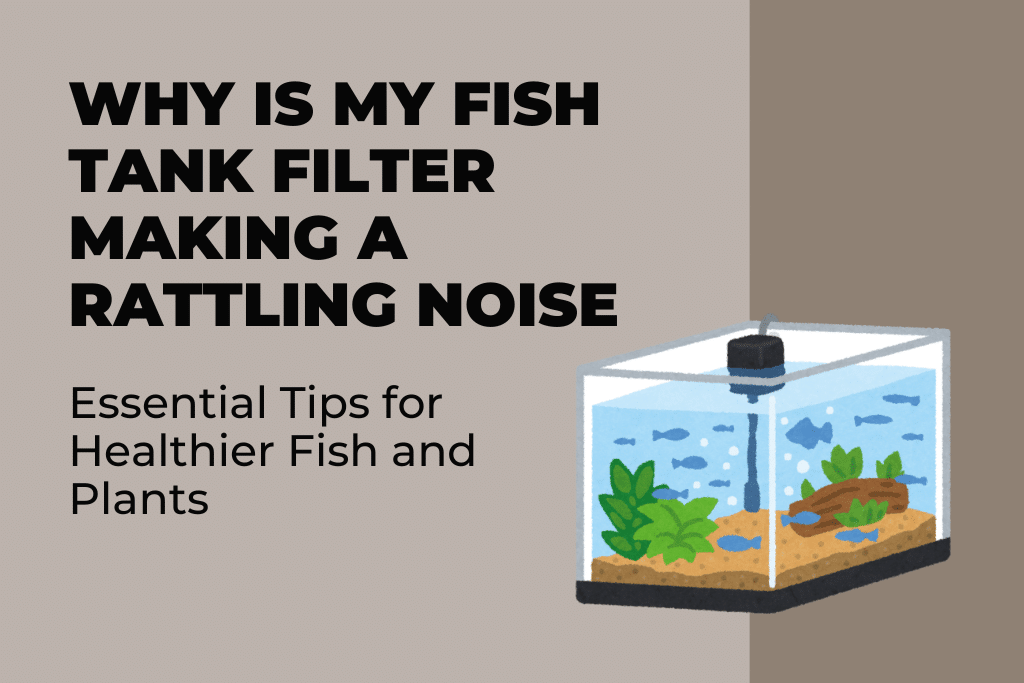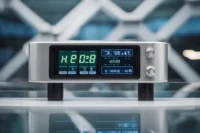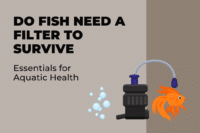When a fish tank filter starts making a rattling noise, it’s an indication that something isn’t functioning as it should. As the heart of the aquarium’s life support system, the filter circulates water and removes waste, ensuring a clean environment for aquatic life. The unexpected noise can be caused by anything from a simple blockage or a loose component to more complex mechanical issues within the filter.
Regular maintenance checks are crucial for diagnosing and fixing rattling noises in a fish tank filter. These checks allow the owner to ensure the filter is cleaned properly and that all parts are secured. When properly maintained, filters are less likely to develop issues that can lead to noise. However, if such a sound arises, investigating the impeller, the part of the filter that moves water, or looking for trapped air bubbles could present a solution.
Key Takeaways
- A rattling fish tank filter indicates a potential problem with its operation.
- Regular maintenance is key to preventing and resolving noise issues.
- Investigating common culprits, such as the impeller or trapped air, can rectify the noise.
Understanding Aquarium Filter Noises
Aquarium filters are crucial for maintaining a healthy aquatic environment, but sometimes they can produce unwelcome noises. Understanding the source of these sounds is key to rectifying them.
Common Causes of Filter Rattles
Several factors are typically responsible for the rattling sound emanating from aquarium filters. A common issue is air bubbles; if trapped in the system, they can cause vibrations as water flow is disrupted. In other cases, a broken impeller inside the filter could be to blame. Wear and tear on this moving part often lead to a rattling noise, signaling the need for repair or replacement.
Another potential culprit is loose components within the filter. Over time and with continuous use, parts can become less secure, which may vibrate when water passes through them, resulting in a distracting rattling sound. This issue might be resolved by tightening or re-securing these parts.
The Role of Water Flow and Level
The water flow and level within the aquarium significantly influence filter noise. If the filter is not fully submerged or the water level is too low, a conspicuous noise can occur as water is pulled in and pushed out of the system. Ensuring the filter is correctly positioned and the tank’s water level is appropriate can often mitigate this issue.
Moreover, the flow rate set on the filter’s pump can affect noise. A flow rate that is too high for the aquarium’s size might not only stress the inhabitants but also contribute to excessive noise. Conversely, a setting that is too low could cause the filter to struggle and make noise as it operates. Adjusting the pump to an optimal flow rate, considering the size and type of the aquarium, can help maintain a quiet environment.
Filter Maintenance and Cleaning
Proper filter maintenance and cleaning are crucial for preventing a fish tank filter from producing a rattling noise. A well-maintained filter not only operates more quietly but also ensures a healthier environment for the aquarium’s inhabitants.
Routine Cleaning Procedures
Regular maintenance of a fish tank filter is essential for its efficient operation. Routine cleaning procedures should include:
- Monthly checks: Disassemble the filter to examine internal parts such as the impeller for any signs of wear or damage.
- Impeller care: Carefully clean the impeller and its housing using a soft brush to remove any build-up of slime, which could cause noise if neglected.
These steps help to prevent issues that could cause rattling sounds and ensure the filter functions smoothly.
Dealing With Dirt and Debris
Over time, dirt and debris can accumulate in the filter, causing it to work harder and possibly create noise. To handle this:
- Inspection: Regularly inspect the filter media and replace it as necessary. If the filter media is clogged with detritus, it may not only contribute to noise but also reduce the filter’s efficiency.
- Thorough cleaning: Remove and rinse the filter media in aquarium water to preserve beneficial bacteria. For a dirty filter, a more thorough cleaning might be required, being cautious not to disturb the biological balance within the tank’s ecosystem.
By undertaking these cleaning and maintenance tasks consistently, one can prevent most sounds related to a rattling filter, ensuring a serene environment for both the fish and the aquarium keeper. To learn more about the significance of keeping a clean filter, consider the advice on Troubleshooting Tips For A Rattling Noise In Your Fish Tank Filter.
Troubleshooting Mechanical Issues
When a fish tank filter starts making a rattling noise, it often indicates a mechanical issue. Addressing problems with the impeller, motor, or loose components can help eliminate this disruptive sound.
Inspection of Impeller and Motor
The impeller is a common culprit when it comes to rattling noises in a fish tank filter. This rotating device is responsible for water movement within the filter system. A broken impeller or one that is clogged with debris can cause irregular spinning and create rattling sounds. To troubleshoot, first, turn off and disconnect the filter. Then:
- Open the filter housing and carefully examine the impeller for any signs of damage or wear.
- Clean any build-up of algae or foreign objects that might obstruct the impeller’s motion.
- Check if the impeller fits snugly; a misaligned impeller should be repositioned or replaced if damaged.
Inspect the motor for any signs of malfunction. An overheating or noisy motor might require repairs or replacement by a professional if beyond simple troubleshooting steps.
Loose Components and Vibration Dampening
Loose components within the filter can vibrate and rattle. It is important to:
- Tighten any screws or fastenings that have come loose over time.
- Ensure all parts are correctly assembled and secure.
If vibrations persist, anti-vibration pads can be placed under the filter to help dampen noise. These pads work by absorbing the vibrations between the filter and the surface it rests on, thus reducing noise. Additionally, consider any nearby decorations or tank components that might be causing noise through secondary vibrations and secure them as well.
Enhancing Water Quality and Filter Efficiency
To ensure a thriving aquatic environment, maintaining high water quality and filter efficiency is essential. This section outlines methods of managing beneficial bacteria and adjusting chemical levels to keep your fish tank functioning optimally.
Managing Beneficial Bacteria
One must strike a balance within the biological filtration system, as beneficial bacteria are crucial for breaking down harmful toxins like ammonia and nitrites into less harmful nitrates. To do this, filter media should be cleaned or replaced regularly but not so often that you disrupt the bacterial colonies. It’s imperative to use a gentle rinse in tank water during cleaning to preserve these bacteria.
Adjusting Chemical Levels for Optimal Filtration
Maintaining proper water parameters is key to an efficient filtration system. Regular testing for pH, ammonia, and other harmful chemicals will inform if adjustments are needed. For instance, ammonia levels must be kept near zero, utilizing conditioner products if required. Additionally, pH levels should be stable, as fluctuations can harm fish and beneficial bacterial colonies. For external chemical additives, ensure they are suitable for the specific type of filtration in use.
Upgrading and Replacing Filter Components
Upgrading and maintaining aquarium filters are essential steps in ensuring a quiet and efficient aquatic environment. Proper filter model selection and timely replacement can significantly reduce noise and enhance filtration performance.
Selecting the Right Filter Models
When selecting a filter model, it’s important to consider the type of aquarium and the specific needs of the inhabitants. Canister filters are known for their robust filtering capabilities and tend to operate quietly when well maintained. Hang-on-back filters provide convenience, but may be noisier if not chosen carefully. Sponge filters are excellent for breeding tanks and are nearly silent, though they may not be suitable for larger setups. The return pump should be of a high-quality brand known for quiet operation. Always opt for a filter with the capacity appropriate for the tank size to ensure it does not overwork and create excess noise.
- Recommended for small to medium tanks: Hang-on-back filters or sponge filters.
- Recommended for large tanks: Canister filters or external filters with a quiet return pump.
When to Replace Your Filter
The need to replace a filter or its components typically arises when noise levels increase or performance declines. Filter floss and other media should be replaced periodically as they become clogged with debris. A failing return pump could be a source of noise and inefficiency and may require an upgrade to a more advanced model. Constant noise from a fish tank filter that was once quiet could signal the need to replace worn or damaged parts.
- Indicators for replacement:
- Incessant rattling or humming noises
- Decreased water flow or filtration quality
- Visible wear and tear on the filter’s mechanical parts
A quality filter that is properly maintained can last many years, but upgrading some of its components can be necessary to maintain a quiet and healthy aquarium. Selecting models from reputable brands known for their quality and reliability can significantly reduce the need for frequent replacements.
Final Thoughts and Additional Tips
When addressing a rattling noise emanating from a fish tank filter, it is critical to consider all potential solutions. A systematic approach ensures that one identifies the cause of the issue effectively and applies the appropriate remedy. Should the noise persist after cleaning and inspection, one may need to restart the filter to reset its operation.
In addition to the aforementioned steps, maintaining a silent environment for an aquarium is sometimes as simple as placing the filter within an insulated cabinet. This can considerably reduce noise emanating from the vibration of a working filter. Here are some tips to help maintain a serene aquarium setting:
- Keep the water clean: Regular maintenance prevents debris accumulation, which might interfere with the filter’s function and induce noise.
- Optimize the filter’s position: Ensure the filter is situated correctly to prevent air bubbles that could contribute to a rattling sound.
- Use vibration dampening pads: These can help minimize noise by absorbing the vibration between the filter and the surface it rests on.
To aid with troubleshooting, here are some frequently asked questions (FAQs):
- Why is it important to keep the filter clean?
Keeping the filter clean avoids blockages and ensures efficient operation, which can reduce noise. - Can a filter become too old and cause noise?
Yes, over time, wear and tear can lead to parts becoming loose or damaged, causing noise.
Remember, if these tips do not resolve the rattle, one should consider professional advice or reach out to the filter’s manufacturer for further assistance.










